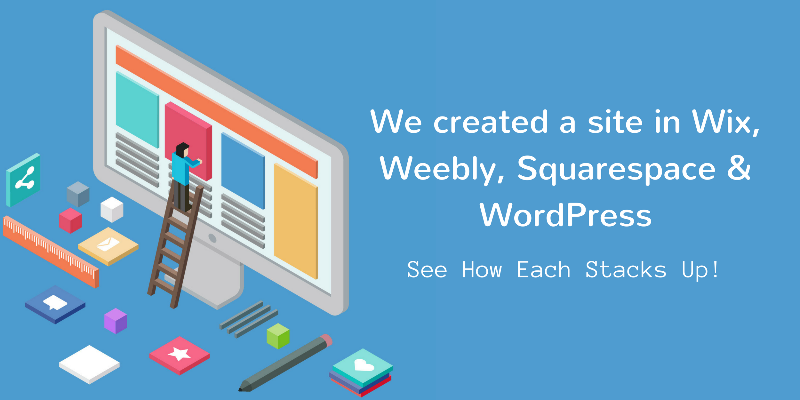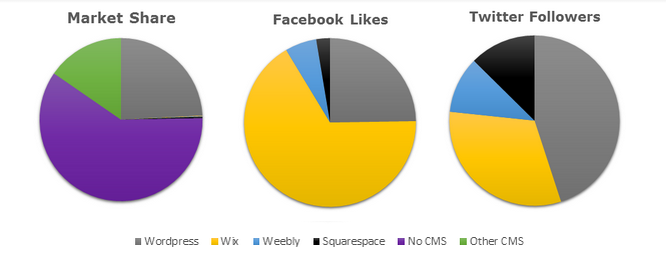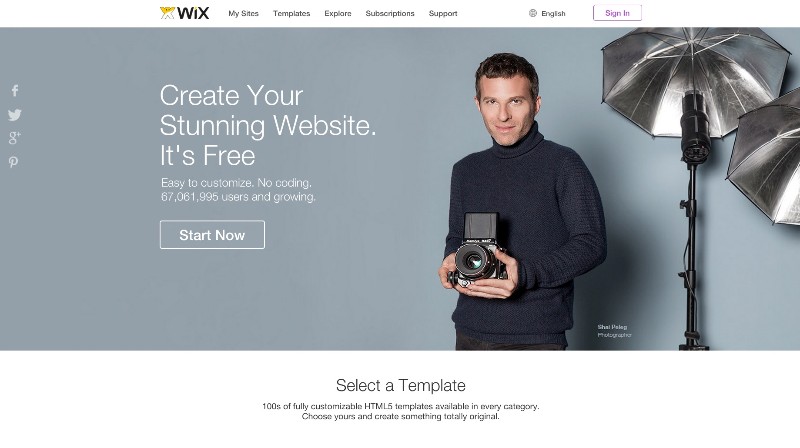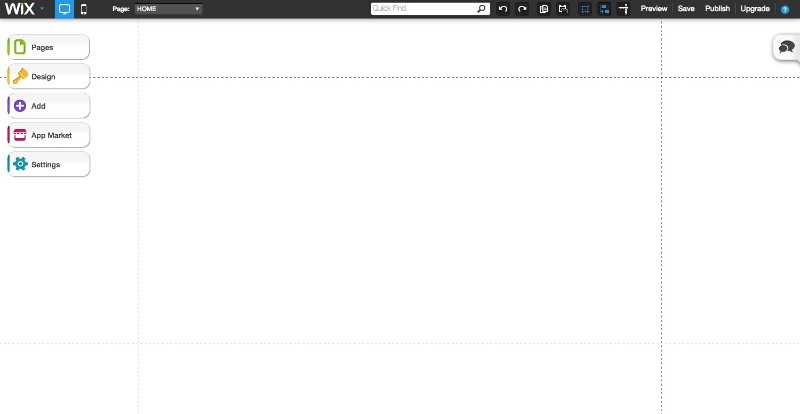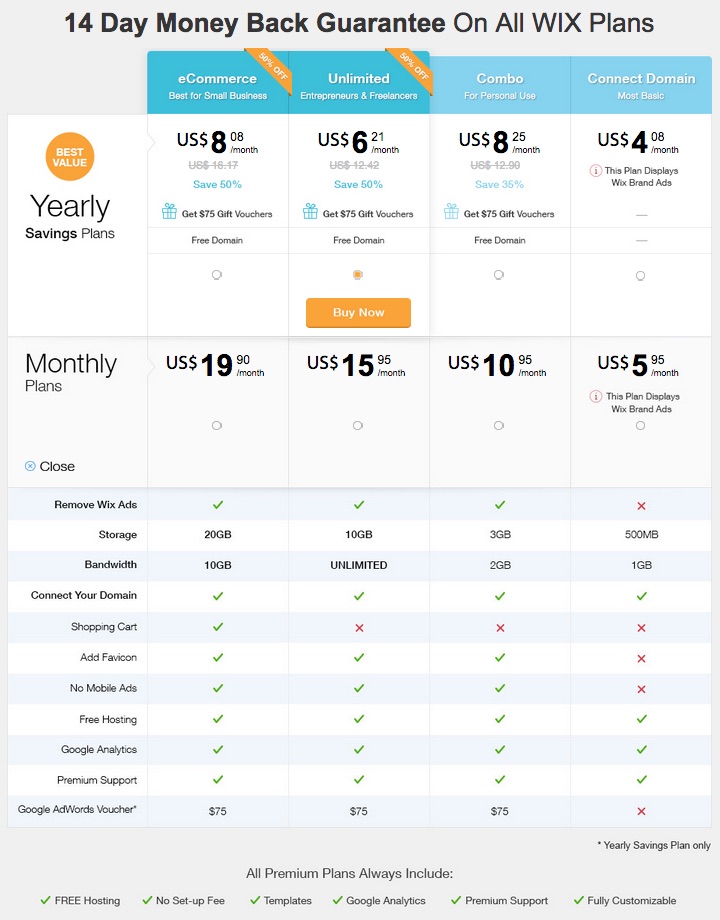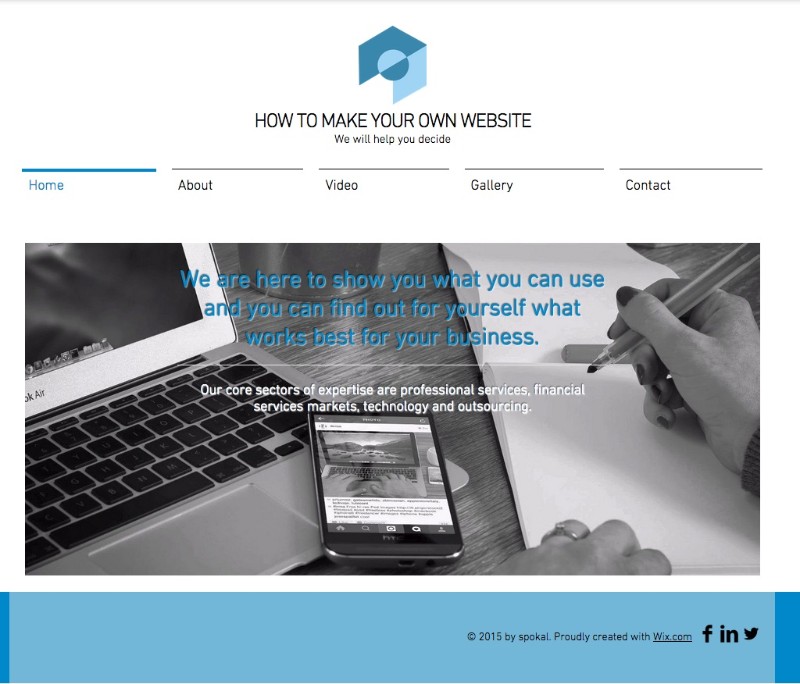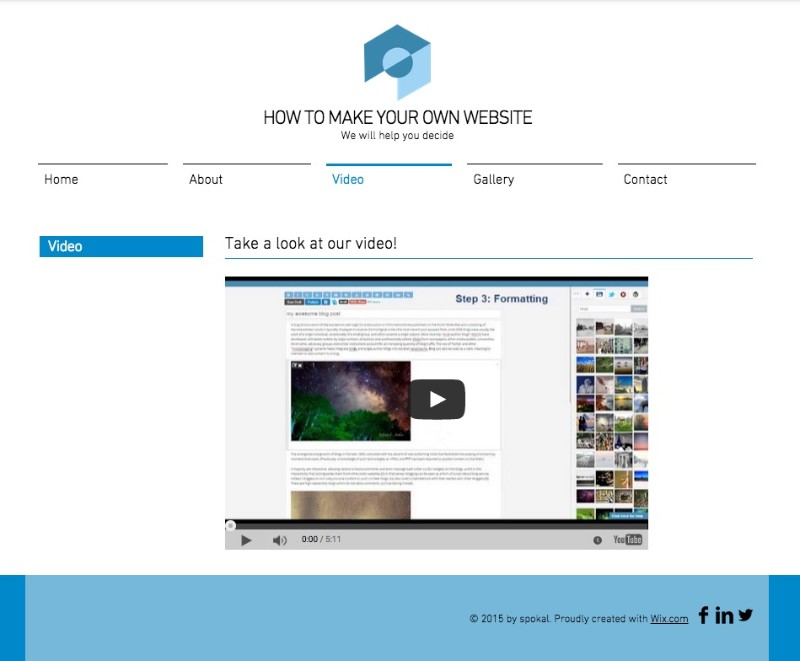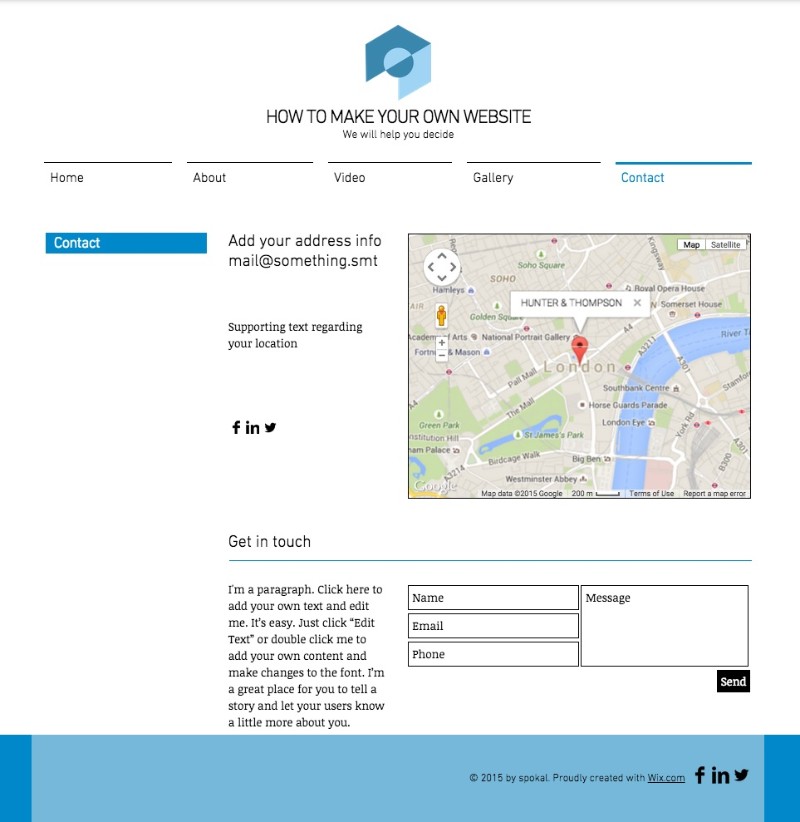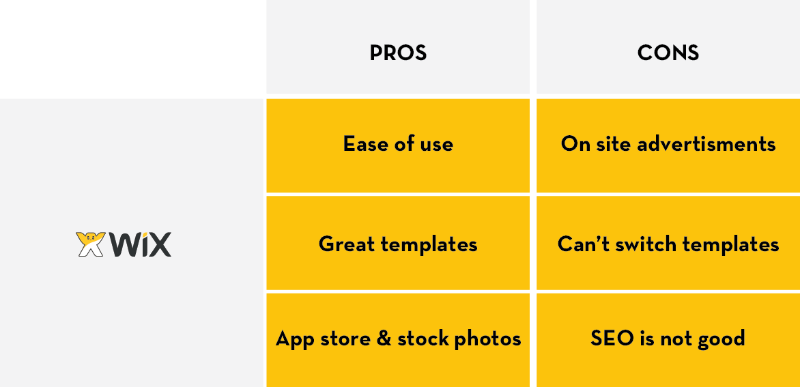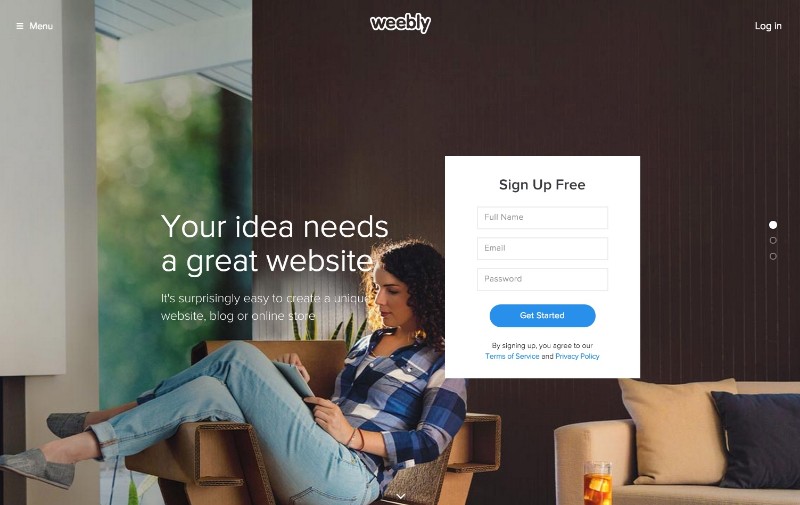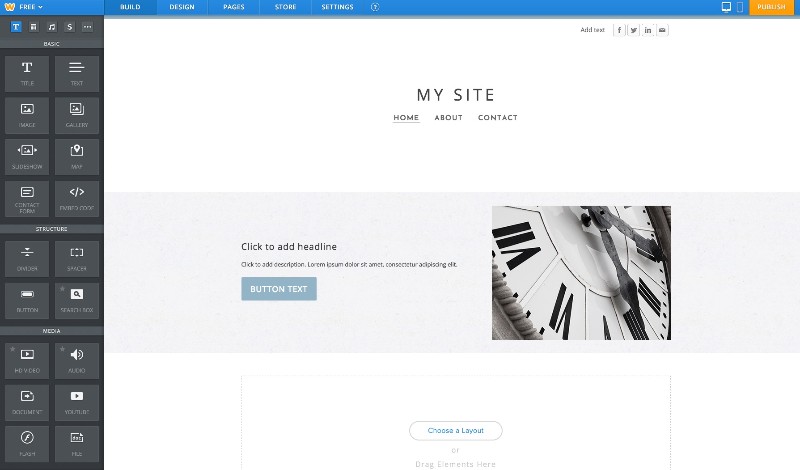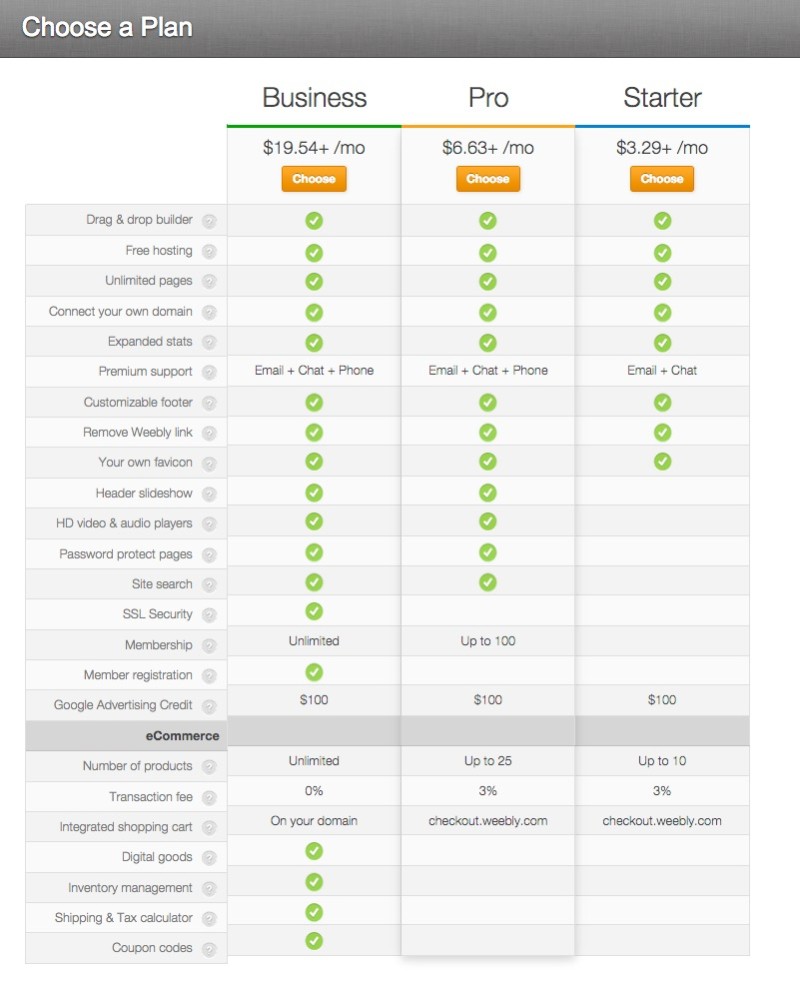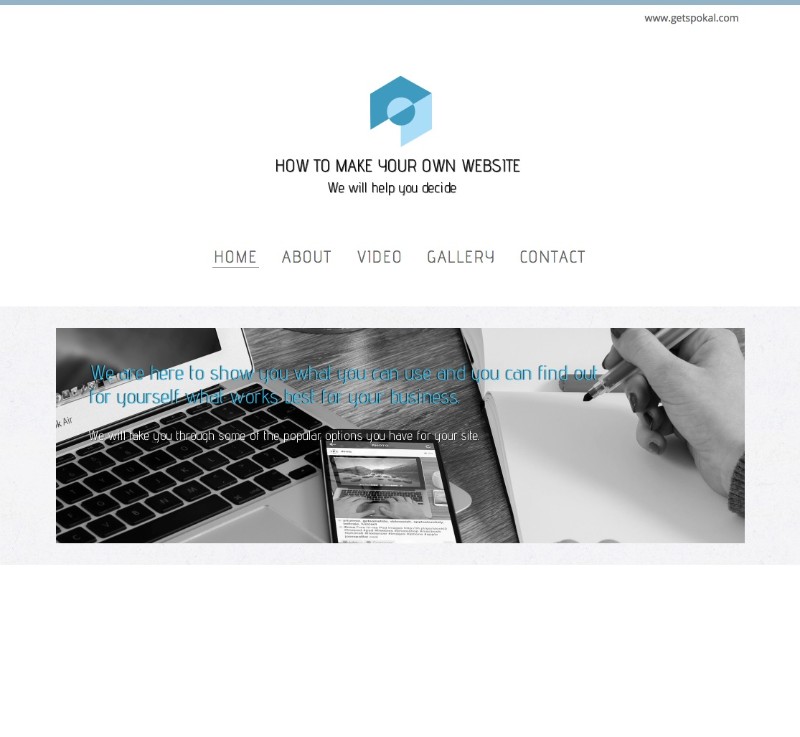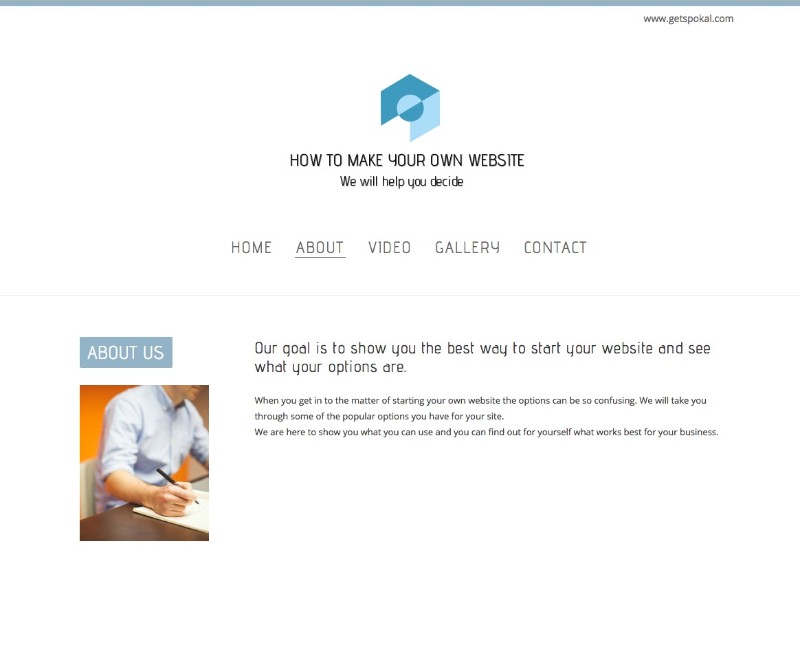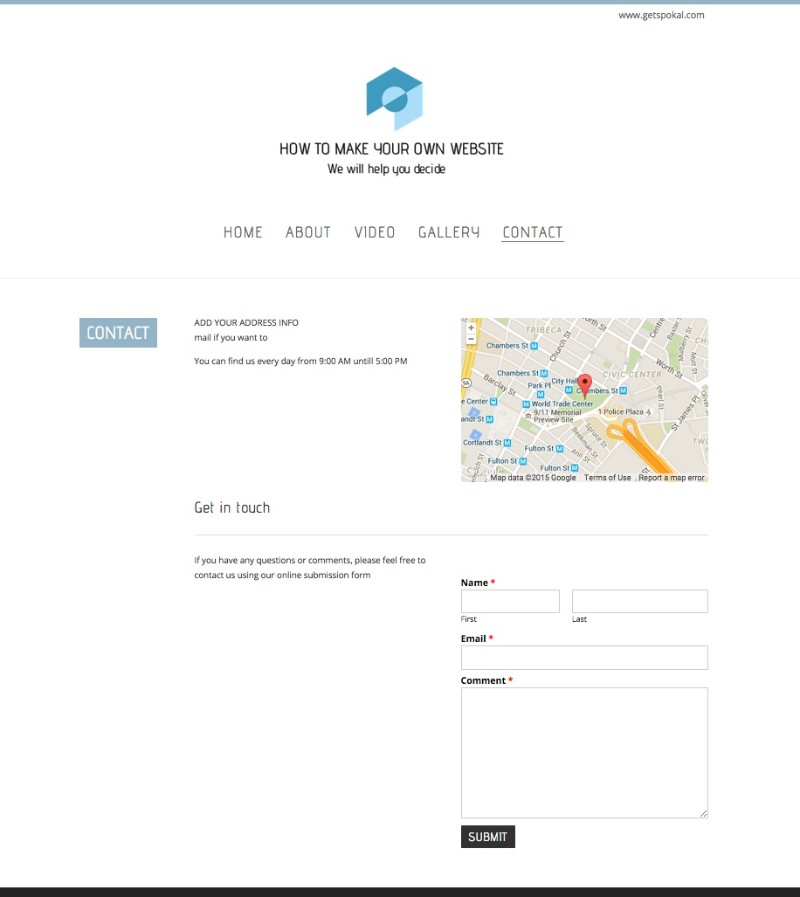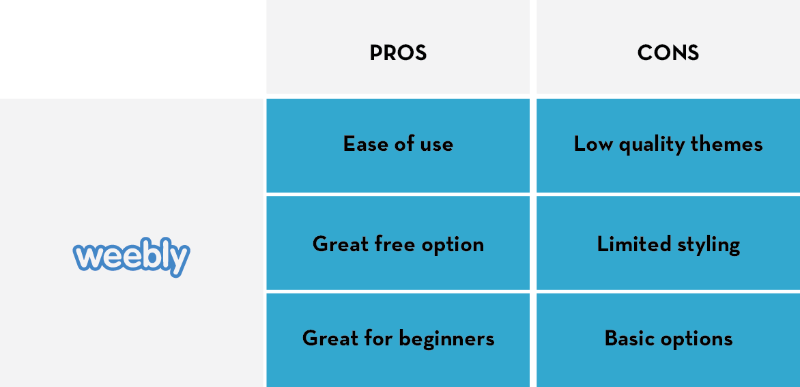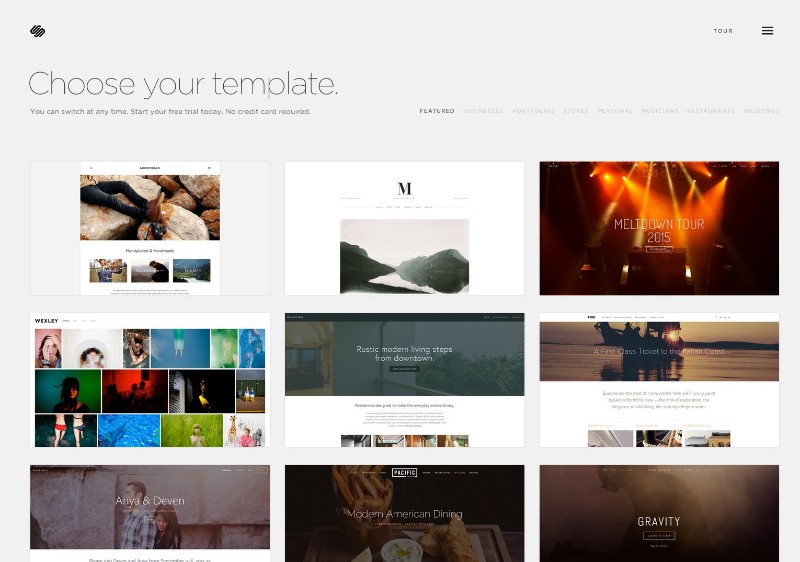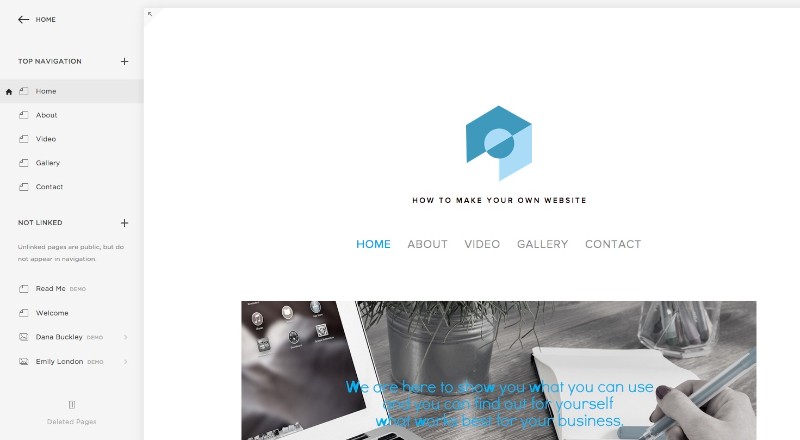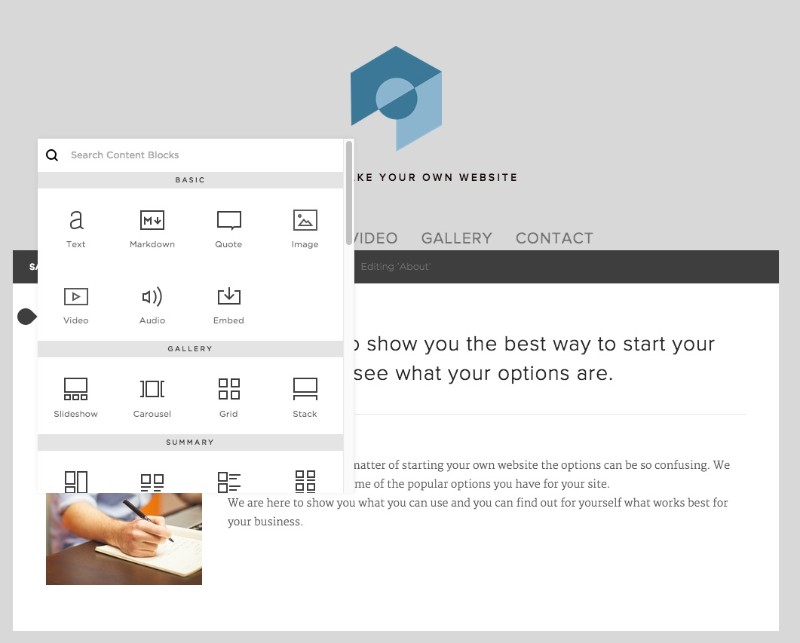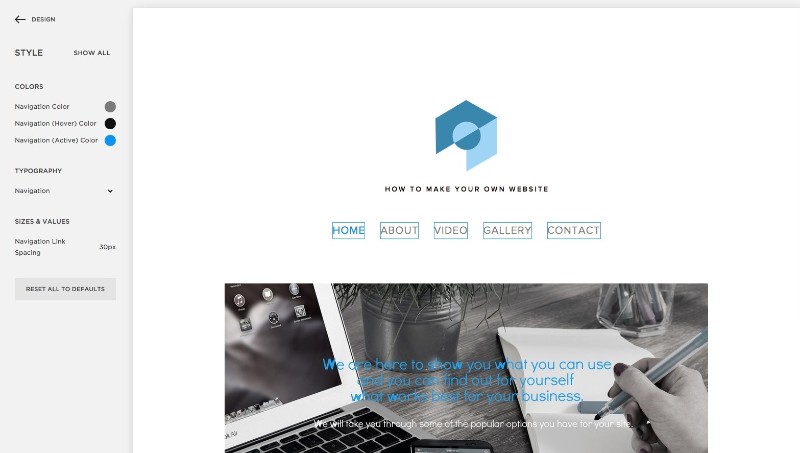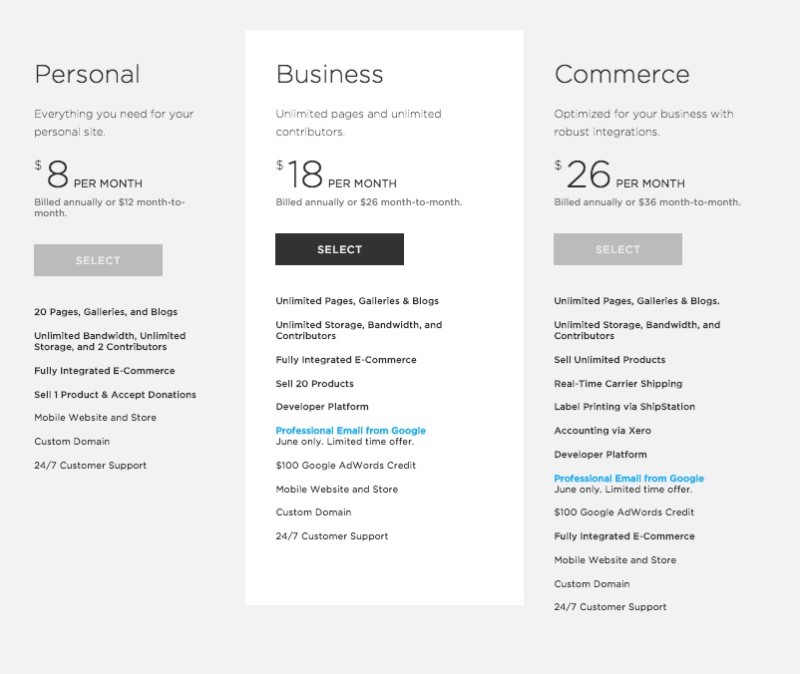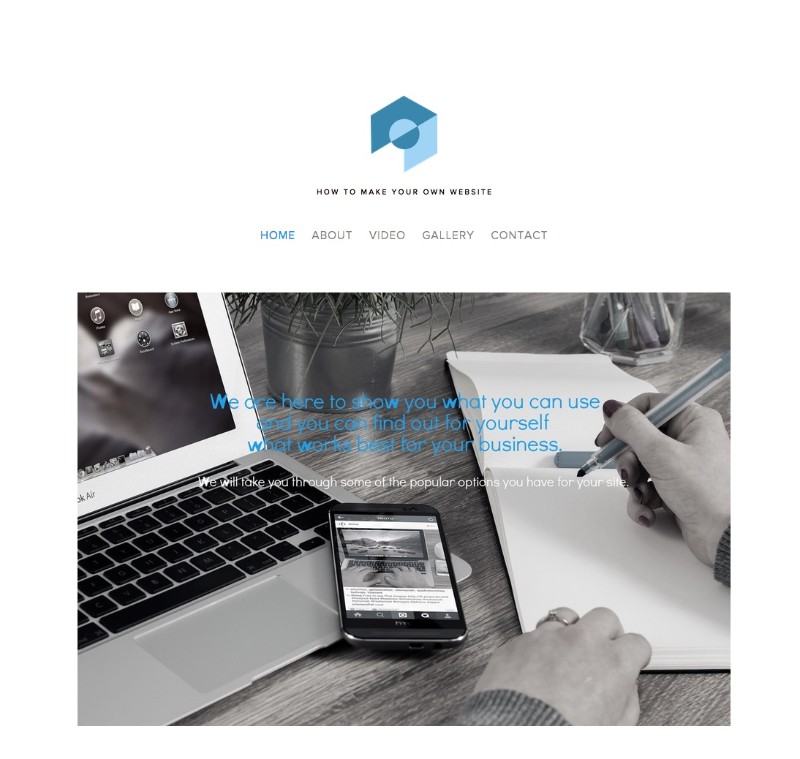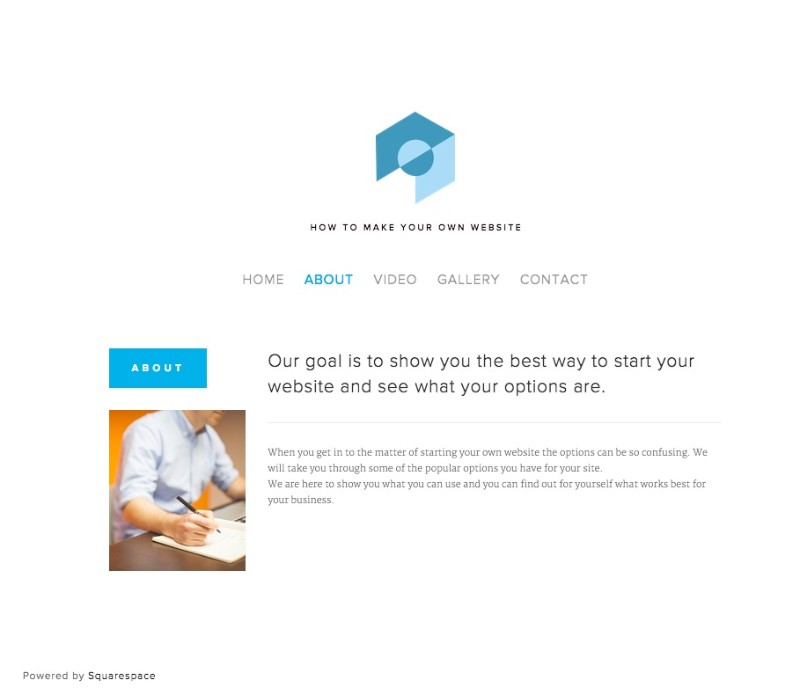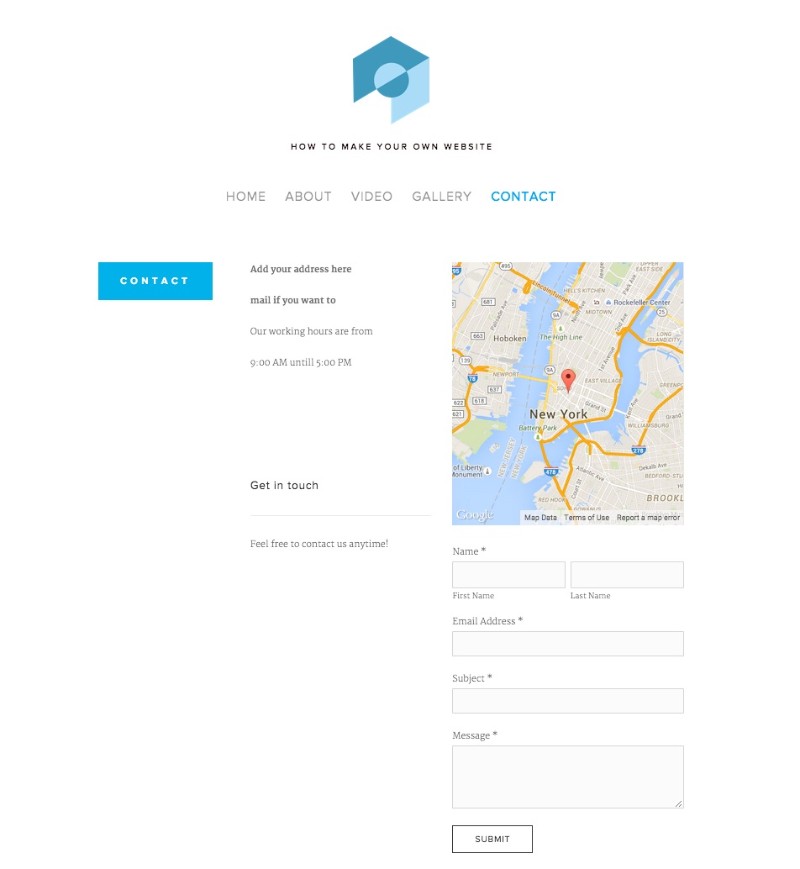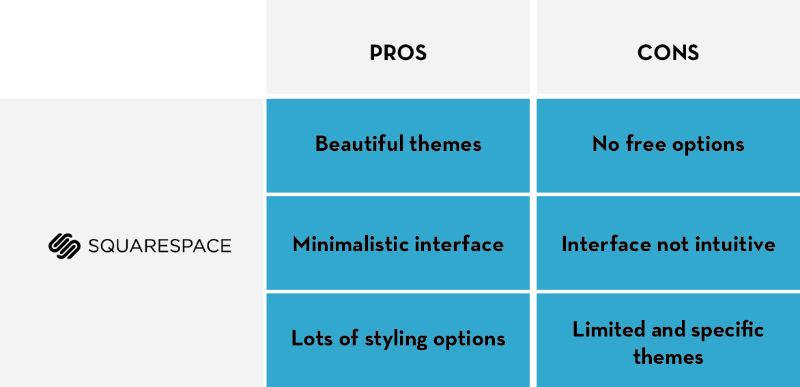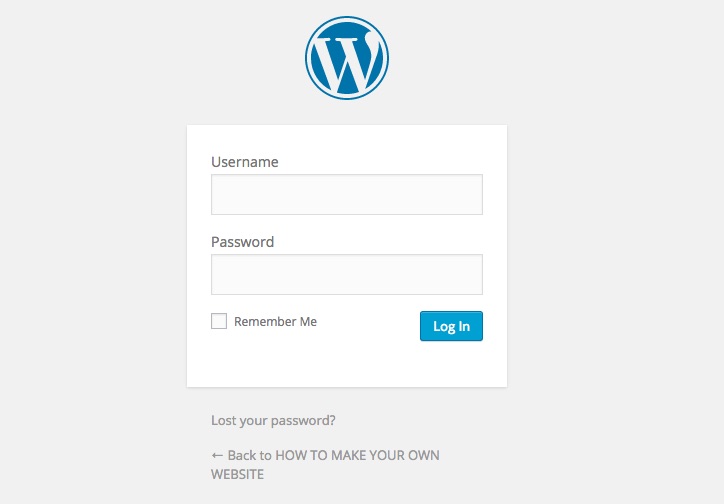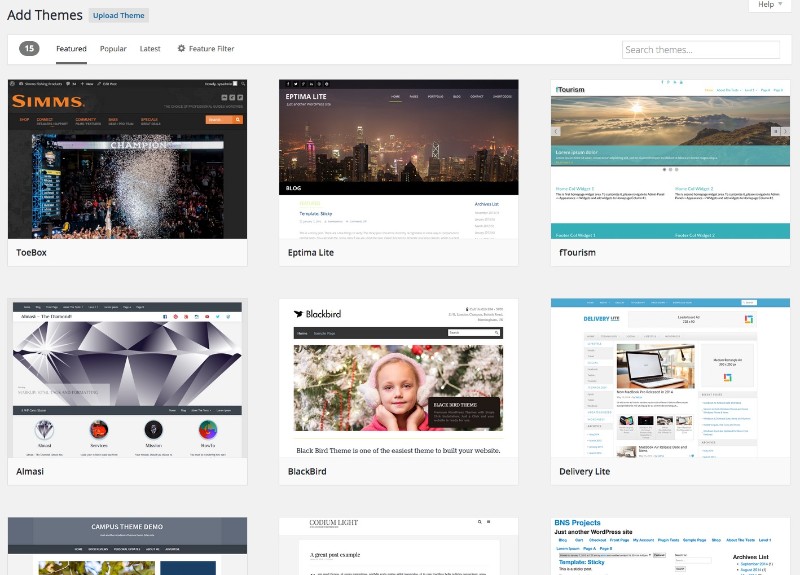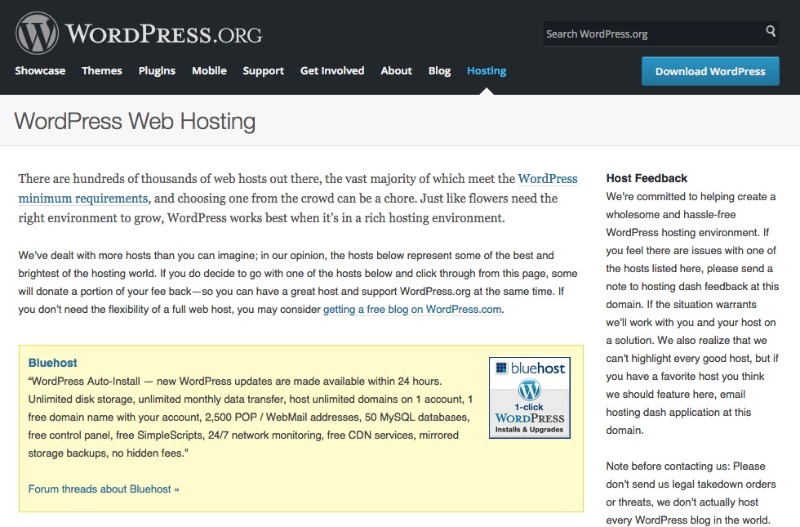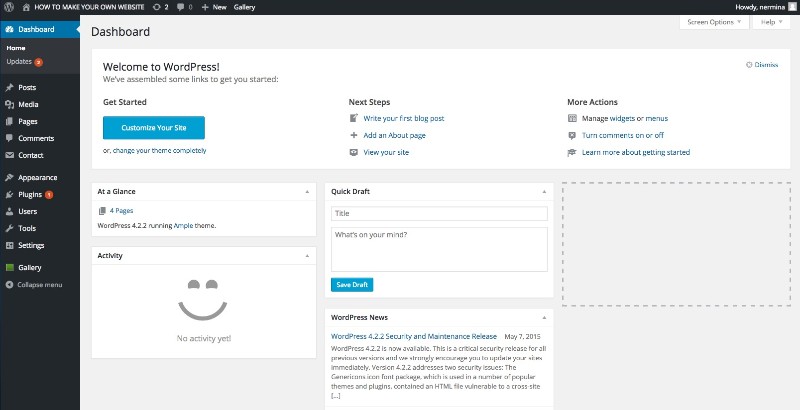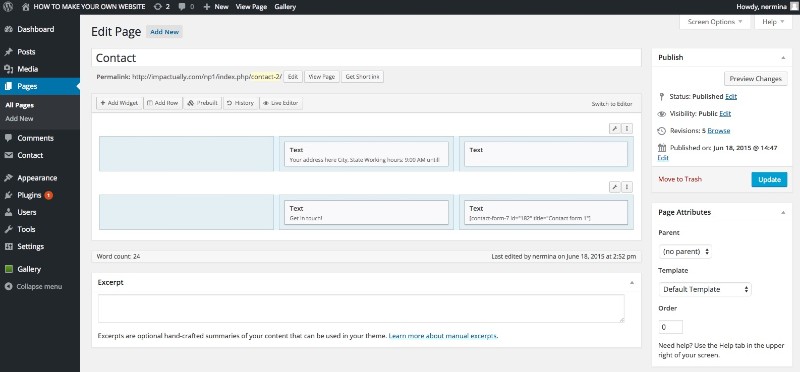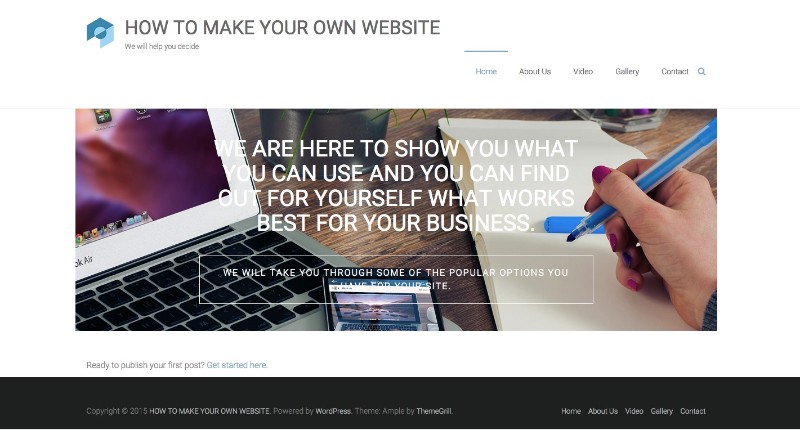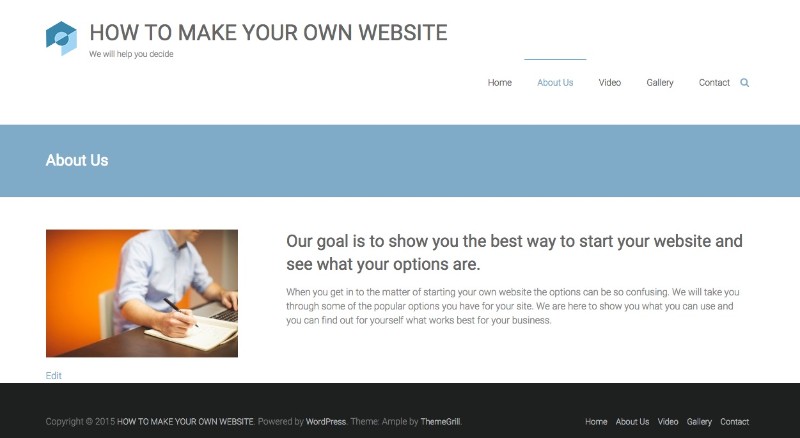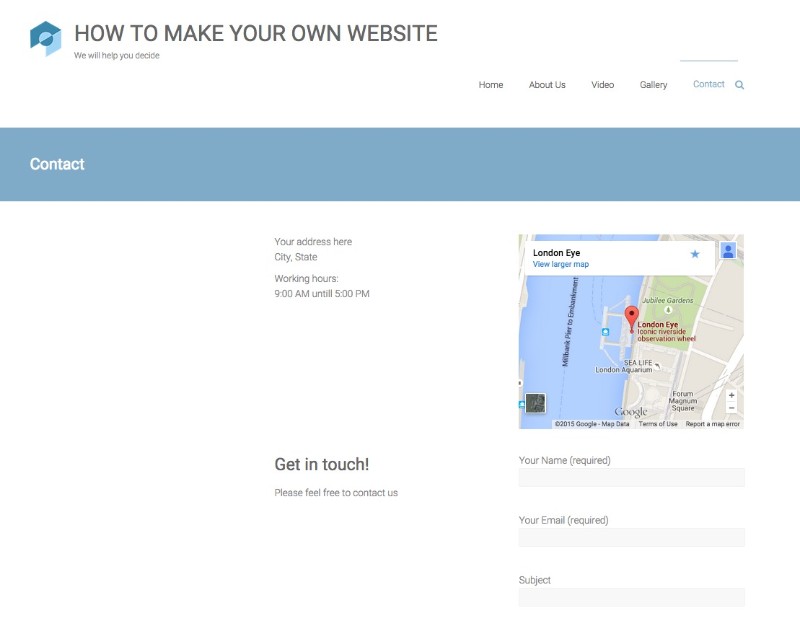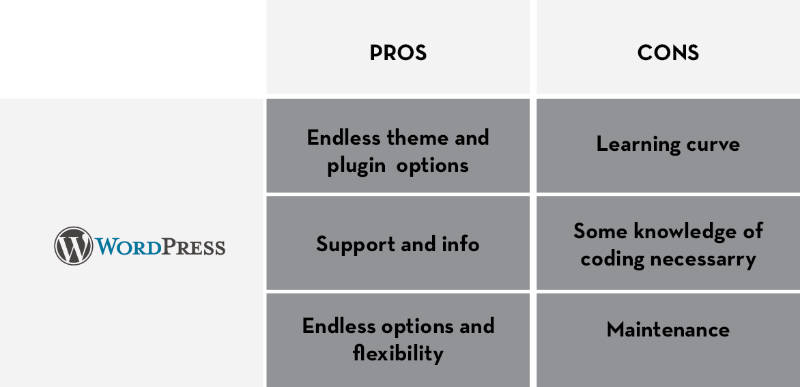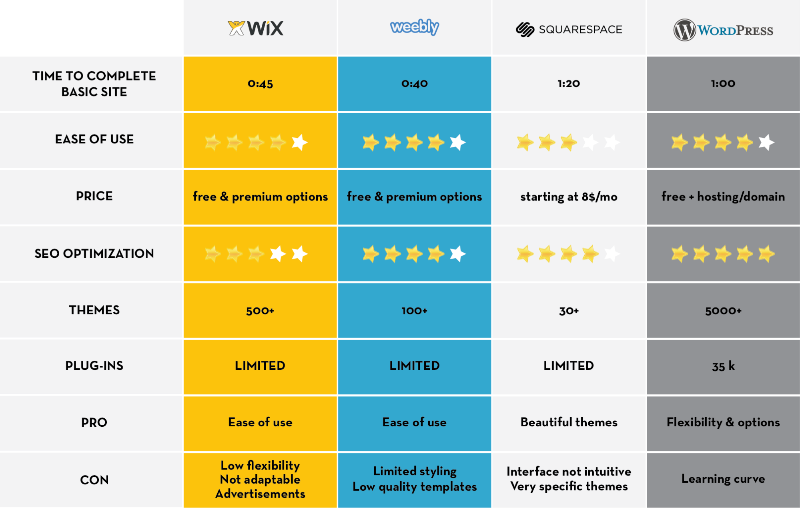Creating a website and trying to figure out what platform to use?
We created a site in the big 4 website creation tools – recorded the video and show you the pros and cons of each.
If you’re thinking of building your own website – you want to read this first.
First, some background on each:
Reports of the number of users of each platform vary widely from source to source, but the general consensus is that WordPress leads and no one else is catching up anytime soon.
According to a July 2015 study by W3Techs, out of the 40.1% of the websites it surveyed that use a Content Management System, WordPress enjoys a market share of 60.3% (24.2% of the potential market overall, when including non-CMS users).
The study found that all other CMS platforms together account for just 15.4% of the potential market, and Wix, Weebly, and Squarespace each claim less than 1%. WordPress dominates on all fields and channels, except on Facebook, where Wix’s recent surge is likely attributable to its promotional broadcast during Super Bowl XLIX.
Numbers aside, each platform utilizes WYSIWYG (What You See Is What You Get), which allows you to construct your site without ever having to look at its HTML-laden underbelly — an approach that has both pros and cons.
To assess the usefulness of WYSIWYG, and to compare other key features of each platform, I set out to create a website on all four, keeping colors, layout, and content as consistent as possible across platforms.
I started out with a visual concept, which I quickly discovered was limited by each platform’s templates; so if you have specific colors, formatting, or other key elements in mind, your first step in choosing a platform should be to look through each provider’s templates, because availability may be a deciding factor.
Based on its training videos and user reviews, Wix seemed like the easiest platform to master, so I decided to start there — and it certainly lived up to its “easy” reputation. With over 500 templates sorted into descriptive categories, there’s bound to be at least one to suit you.
Another Wix advantage is that all of your content is visible, and editable, on your screen at all times. The editor is pretty simple, and the menu is similar to Windows Paint: just drag and drop the elements you want.
On the downside, clicking anywhere on the screen opens a menu, which can be annoying and distracting, especially if you’re working — and clicking — quickly. And once you’ve selected a template, you can’t swap it out later, so you have to choose wisely. In addition, when you choose Wix, you stay with Wix — this platform will not let you export or transfer your site elsewhere.
On the plus side, hosting and domains can be taken care of on the spot, and fees are reasonable, with packages ranging from $4 per year to about $20 per month.
Wix also offers a ton of apps to add to your site, a lot of them free — though some, like Shopify, cost extra even if you upgrade your Wix plan.
All in all, Wix is fairly quick, simple, and easy to use.
Watch me build the site (in fast forward!):
Weebly.com
I found Weebly just as easy to use as Wix — perhaps even easier, in terms of user friendliness and navigability.
There are hundreds of templates to choose from, and you can switch templates whenever you like, which is not an option on the Wix platform. Weebly’s drag and drop is more limited, though, in that you can employ that function only in designated areas.
Personalization of templates is also limited, unless you have coding skills — an unlikely scenario, given that most folks who use a basic site builder do so because they don’t know code. What I liked more about Weebly was that there weren’t sub menus upon sub menus; you make your selection and edit it on the spot. And the site can be exported (in code) if you decide to migrate to a more advanced platform later.
Like Wix, hosting and domains can be taken care of right on site, with premium hosting packs priced from $4 to $20 monthly. The domain, paid for separately, is priced at around $30 yearly, depending on the plan you choose, but you can also buy your own domain independently.
Overall, again, I found Weebly a bit easier to use than Wix, but it doesn’t offer as much potential for personalization.
Watch me build the site (in fast forward!):
Wow, I did not like Squarespace! For me, the whole user experience was frustrating and annoying.
The good news first, though. Squarespace’s templates are elegant and expensive-looking; even a professional web designer may not provide you with the quality available here. Unfortunately, though, the templates also seem designed for very specific audiences and more oriented toward personal rather than professional sites. Even after find a somewhat acceptable template, I still had the uneasy feeling that it was too cool and “hipster” for me. If you’re an artist with a portfolio and a gallery, this may be the way to go; but for any other type of business, I’m not a fan.
In addition, the WYSIWYG editor is unreliable, in that the format it displays when you’re working in it is entirely different from the one that appears on the finalized page. HTML code is an option, and the better choice if you know how to work with it.
Another drawback to Squarespace is the confusing side menu of editing options; I had to repeatedly click through multiple screens to access the various editing and design features I was looking for.
Like its competitors, Squarespace offers a selection of hosting and domain services onsite, at a reasonable cost of $8 to $26 per month, depending on your chosen plan.
Unlike its counterparts, though, Squarespace does not offer free apps.
Overall, again, I did not like Squarespace for the purpose of creating a business site — but if you have artwork to publish and share, and the patience for the cumbersome editing functions, I think it can provide a great platform.
Watch me build the site (in fast forward!):
WordPress.org
As noted above, WordPress is the most popular and widely used tool for building sites, and for posting blogs in particular.
WordPress offers over 10,000 template themes, ranging from free to premium paid — there’s something here for every imaginable personal or business concept, or anything else under the sun. Because it’s strictly a Content Management System rather than a website builder, setup works a little differently from the other platforms. Though WordPress itself is free of charge, you’ll need to spend some money registering a domain name and securing a web host (which can be done from the wordpress.org site).
Bluehost is a good choice; it’s a partner of WordPress, which makes the hosting process a lot easier. Hosting services cost from $3 to $15 a month, depending on your plan and needs, and some options include a domain.
So, how well does WordPress work? Pretty well, actually. There are a million and one available plug-ins (or so it seems) to help non-coders create what they need — though as is the case with most things, there are great plug-ins and bad ones, and some are free while others cost money.
The dashboard was pretty self-explanatory and intuitive. There’s a user tutorial, and online support is available. In addition, WordPress offers suggestions or shortcuts for just about every function, and even breaks down code to a level I could comprehend.
Exploring all the features took time, and involved trial and error, of course. But the interface was very interesting and engaging, and rather than fidgeting in my chair or cursing the screen, I was constantly wondering, “What does this button do?”
My conclusion should come as no surprise: WordPress is the way to go, because it’s the most likely to provide the results you’re looking for when you need something done right. WordPress proves that you don’t need to pay a developer to build an effective website. I made a basic site with no major setbacks, using only the power of the Internet and my deductive skills — and given time, I feel that WordPress would enable me to create a site that fully realizes my visual concept.
Watch me build the site (in fast forward!):
The website builders get the job done, but they’re pretty basic.
In the grand scheme of things, if you want a platform with good SEO options and enough flexibility to easily update and change your site, WordPress is the obvious choice. The site builders are great for showcasing short-term projects and events, but WordPress is what you want if you have a major business idea or project and are in it for the long haul.
